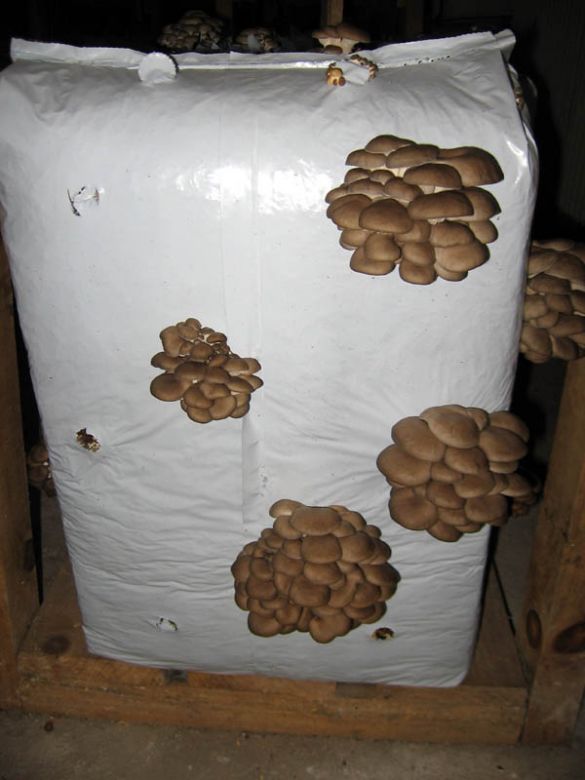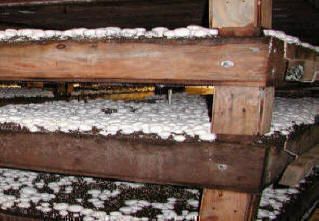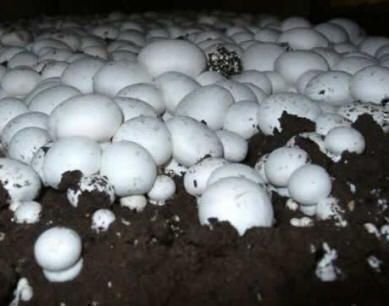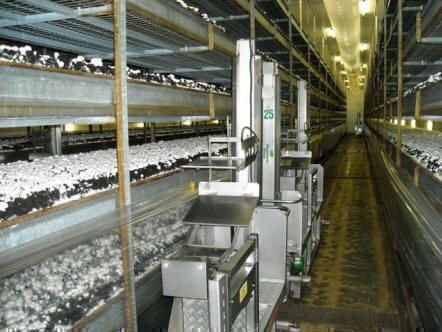Maintenance of stable air humidity:
- it is necessary for quality cultivation of mushrooms
- it increases productivity
- allows air humidity control at each stage of production
Air humidification with adiabatic, i.e. our TE cooling systems (spraying water in the form of fog) is especially suitable because the air is also becoming cooler. In case of nozzle-based devices (with or without high pressure pumps), it is extremely important that nozzles are well-designed and that they disperse water in extremely fine particles - aerosols. At the same time, drops or their dispersion cannot happen during the wetting phase or during the disruption of the work. And this can only be achieved with our TE cooling systems that not only disperse water to very fine particles but also have automatic drainage installed in the pump that prevents any dripping!
Our humidification systems are extremely economical and easy to maintain.
Mushrooms and water
Fresh mushrooms contain 85-95% water, which is a relatively high water content. Water is the main carrier of nutrients for mushrooms and it also regulates numerous biochemical processes.
Mushrooms absorb water and nutrients through the mycelium, and thus participates in the construction of tissues. The water activates various biochemical processes, and the most important ones are enzymatic processes, where it disintegrates cellulose and related substances. It serves for the compulsory thermoregulation in the process of growth and development of mushrooms.
During their development, mushrooms constantly lose and absorb water, and each sudden loss affects the yield and quality of mushrooms.
In the world, due to the increasing consumption in the early 20th century, intensive production of the so called industrial mushrooms was undertaken. Their purpose was not to replace indigenous wild mushrooms, but to be available to as many consumers as possible. Even today, the same rule applies, so the cultivated mushrooms are far cheaper than indigenous mushrooms. Until recently, we have had the case that the price of cultivated mushrooms was higher or the same as the price of meat, and therefore higher than the price of mushrooms in the Western European market. This situation has begun to change since 2000, thanks to the healthy competition, that is, the emergence of an increasing number of manufacturers. The price of cultivated mushrooms fell to the real level, so it can no longer be compared to the price of meat.
In order to meet the increasing consumption of mushrooms, today almost every country has its own production of cultivated champignons (Agaricus bisporus), Pleurotus ostreatus (Pleurotus sp.) and some other species.
moisture
Moisture is one of the most important factors in mushroom cultivation. Moisture in the room can be directly linked to the moment of heating. As soon as it warms up, moisture has to be regulated, because it is known that the air dries by raising the temperature.
Otherwise, the optimum humidity in the fructiferiousness room ranges from 85 to 95%. During mushroom growth, moisture should be maintained between 90-95%, while two days before the harvest, moisture should be reduced to 75-85%.
This prevents the deformation of mushrooms and the caps will not be mucus from too much water.
Such mushrooms (without excessive humidity) are much better preserved. Humidity is achieved by watering the concrete floor or by bedewing with the back, hand or embedded automatic humidifiers. No mater what you use to maintain moisture, the water must be sprayed in as fine a mist as possible, and it is strictly forbidden to directly spray the bags or mushrooms that grow. The breeder should decide how he will
maintain moisture according to specific conditions of the space, and there are also cheap solutions that require more engagement, as well as the more expensive automatic autoclaves with self-contained water such as our TE cooling systems. When we say “more expensive", above anything else we think of the initial investment. It may be more expensive than some other solutions, but it makes your job more professional and makes the cultivation efficient! The mushrooms you cultivate get exactly what they need and therefore the yield is bigger and better. And when the yield is bigger and your cultivation more productive, does initial investment really means something? The amount of humidity in the room is controlled by hydrostats.
Conditions in the period of compost incubation
Parameters | Value | Deviation |
| Room temperature | 18 - 21 ºC | 19 – 23 ºC |
| Compost temperature | 22 – 27 ºC | 23 – 28 ºC |
| Humidity | = 80% | 80 – 85% |
| % CO2 | 0.7 – 2.0% | 1.0 – 3.0% |












